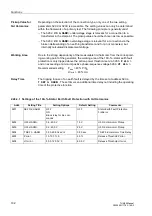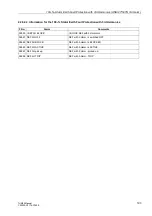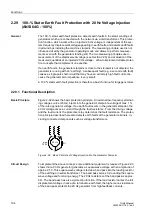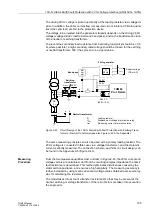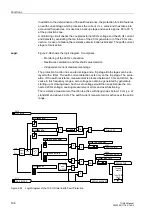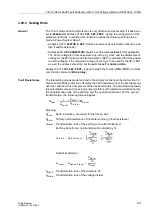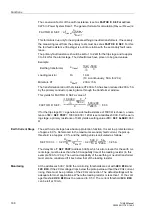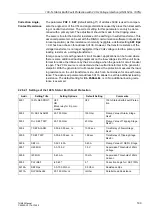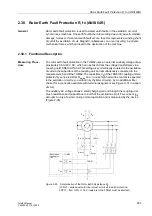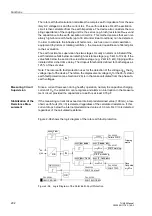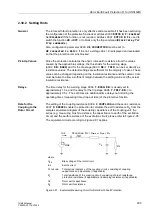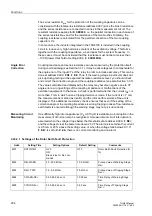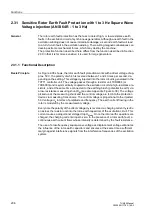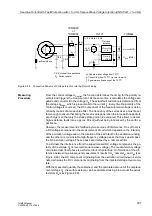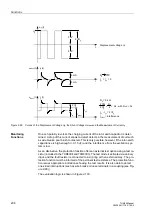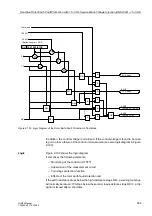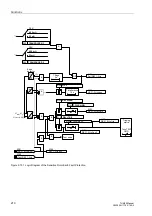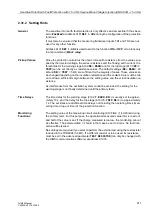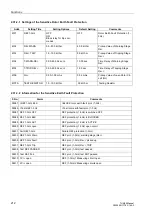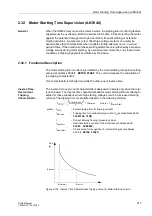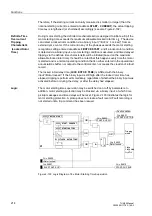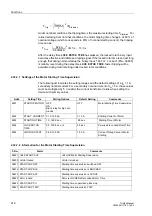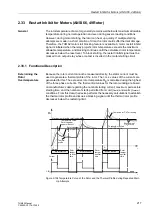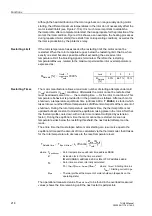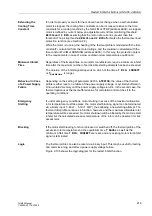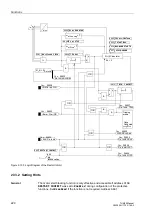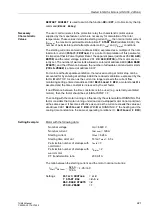
Functions
206
7UM62 Manual
C53000-G1176-C149-3
2.31
Sensitive Rotor Earth Fault Protection with 1 to 3 Hz Square Wave
Voltage Injection (ANSI 64R - 1 to 3 Hz)
General
The rotor earth fault protection has the task to detect high- or low-resistance earth
faults in the excitation circuit of synchronous generators. Although an earth fault in the
excitation winding does not cause immediate damage, a second earth fault will lead
to a turn-to-turn fault in the excitation winding. The resulting magnetic unbalances can
develop extreme mechanical forces, which may destroy the machine.
The protection function described here differs from the function described in Section
2.30 in that it is far more sensitive; it is used for large generators.
2.31.1 Functional Description
Basic Principle
As Figure 2-98 shows, the rotor earth fault protection works with a direct voltage of ap-
prox. 50 V, the polarity of which is reversed between 1 and 4 times per second, de-
pending on the setting. This voltage U
g
injected into the rotor circuit is generated in the
7XT71 controller unit. The voltage passes through a resistor unit 7XR6004 (or
7XR6003) and is symmetrically coupled to the excitation circuit via high-resistance re-
sistors, and at the same time connected to the earthing brush (potential to earth) via
a low-resistance measuring shunt R
M
(see also Appendix, Figure A-36). The voltage
picked up at the measuring shunt and the control voltage are fed into the protection
device via measuring transducers. The control voltage is proportional to the injected
50 V voltage U
g
in terms of amplitude and frequency. The earth current flowing in the
rotor is modeled by the measurement voltage.
Every time the polarity of the direct voltage U
g
is reversed, a charging current I
g
is driv-
en across the resistor unit into the rotor-earth capacitors of the excitation circuit. This
current causes a proportional voltage drop U
Meas
. Once the rotor earth capacitors are
charged, the charging current drops to zero. In the presence of a rotor earth fault, a
continuous earth current flows whose intensity is determined by the fault resistance.
The use of a low-frequency square-wave voltage as displacement voltage eliminates
the influence of the rotor-earth capacitors and ensures at the same time a sufficient
margin against interference signals from the interference frequencies of the excitation
system.

